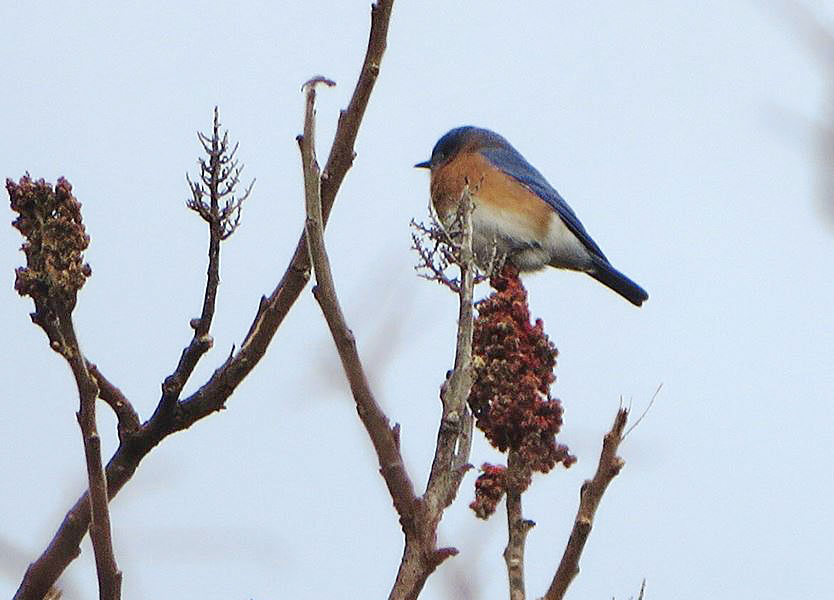
The Eastern bluebird was spotted on Fishers Island in 2017 after a 10-year absence, perhaps because of the return of its preferred meadowland habitat through FIConservancy’s grassland restoration project. John H. Thatcher, Jr. was instrumental in founding FIConservancy. Justine Kibbe Photo
FIConservancy in August received an unexpected gift of $50,000 in memory of John H. Thatcher, Jr., a key founder and longtime president of the Fishers Island Conservancy.
“So much of the good fortune in life that I have enjoyed, with both my family and my career, traces back to the interest that John Thatcher took in me 50 years ago and to the direction he provided,” said the donor, Peter Wendell.
Mr. Wendell grew up in northern New Jersey, a few towns away from Mr. Thatcher’s initial home in Englewood, N.J. In the 1960s and 1970s, Mr. Thatcher was an energetic alumnus for Princeton University and volunteered for the university’s Alumni Schools Committee. He recruited many high school seniors from the area, who subsequently enrolled at Princeton. Mr. Wendell was among that group.
“I never would have considered attending Princeton had it not been for John’s energetic recruitment and, I’m sure, his successful lobbying of the Princeton Admissions Office to admit me!” Mr. Wendell said.
“Since my family did not have the means to pay, Princeton provided a full-tuition scholarship, in addition to a great education, which brought a transformative change to my life. My wife also attended Princeton, as did several of our children and their spouses. With the support of several of my professors at Princeton, I was fortunate to attend Harvard Business School.
“I had not seen John in many years and had never met his wife or family, but when I read of his passing and his deep interest and important role in the Fishers Island Conservancy, it seemed an appropriate place to honor his memory.”
Mr. Wendell’s gift comes at a time when FIConservancy is attempting to demonstrate to the community the critical need to sustain the Island’s natural environment.
“We are so grateful for Peter Wendell’s heartfelt gift to FIConservancy,” said FIConservancy President Tom Sargent. “We are not surprised that John’s influence reached beyond the shores of Fishers Island. His passion still extends to everything that we do here, including the grassland restoration of nearly 170 acres in the Parade Grounds and adjacent to South Beach and Elizabeth Airport into what are now acres of meadows.”